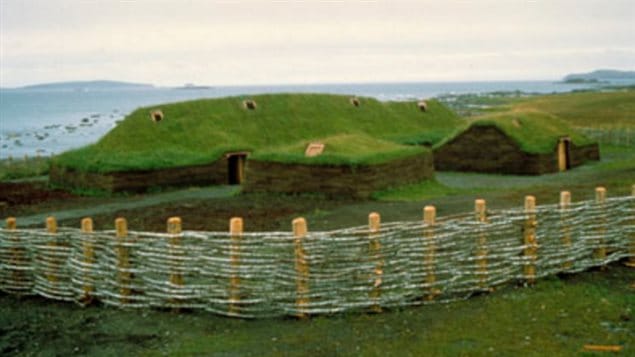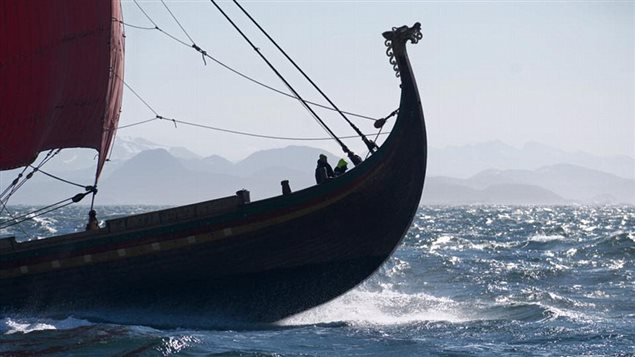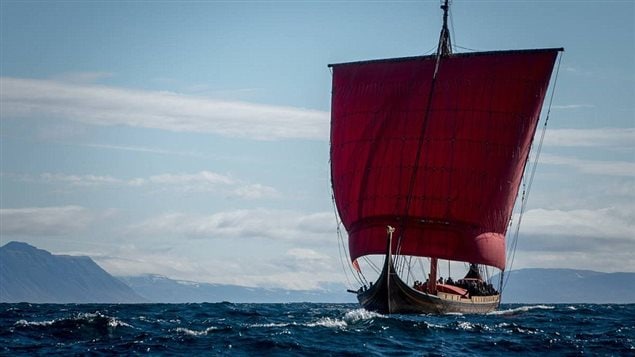Many hundreds of years ago the sight of a Viking “dragon” ship on the horizon was something to be feared.
Residents of the northern peninsula of Newfoundland spotted the distinctive shape off their coast this week, but there was nothing to be feared this time.
The largest authentically built copy of a dragon longship. the ‘Draken Harald Harfagre’ arrived safely in the harbour at St Anthony Newfoundland after a sometimes harrowing month at sea. (video at bottom)
The ship, 35 metres long, 8 metres wide and with a crew of 33, left Haugesund Norway on April 26 to follow in the wake of Leif Erickson some 1,000 years ago.

Erikson “discovered” Newfoundland about a thousand years ago and later wrote it was a temperate land with grapes (possibly big blueberries) and called in Vinland. He established a short-lived settlement there, the first Europeans in North America.

As for the modern Vikings, to guide them across the ocean the crew used a mix of modern and ancient navigation methods including log lines and magnetic and solar compasses.
Sarah Blank, a member of the ground crew for the Draken Harald Hafågre expedition said, “We’re modern Vikings, We want to look beyond the horizon and take us there. That was actually what the Vikings did — they had courage and they looked beyond the horizon and sailed into the unknown, and that’s what we want to encourage people to do.”

While in Newfoundland, the crew will visit L’Anse aux Meadows, on the northern tip of Newfoundland the confirmed site of a Viking settlement and North America’s first European settlement . A second probable Viking site has since been discovered about 650km further south in a place called Point Rosee.
After the visit to Newfoundland the ship will sail south into the Gulf of St Lawrence and upriver to the Great Lakes as part of a planned four-month visit.
additional information







For reasons beyond our control, and for an undetermined period of time, our comment section is now closed. However, our social networks remain open to your contributions.